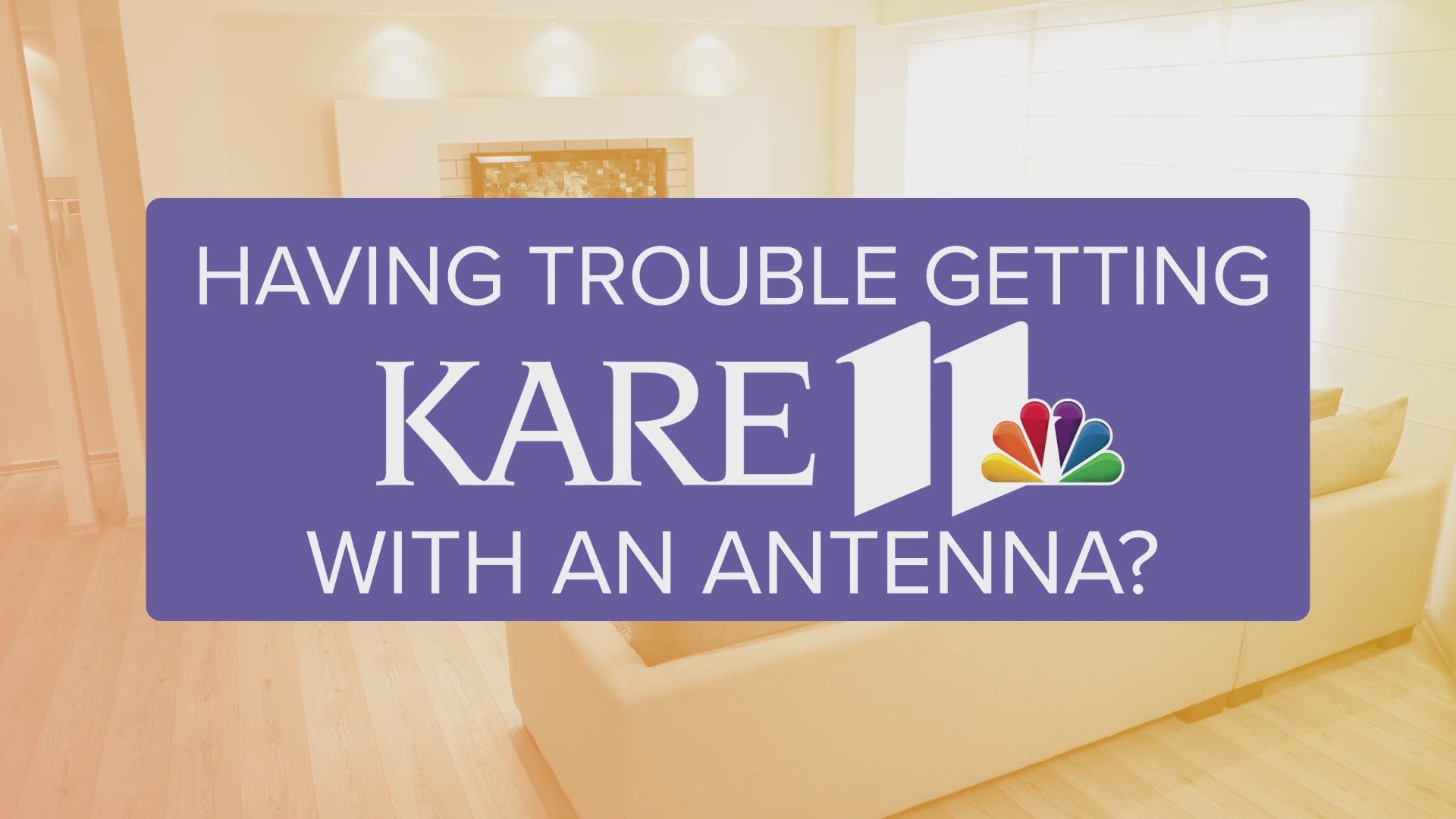GOLDEN VALLEY, Minn. - Here at KARE 11 we get frequent calls from viewers looking for suggestions on how to receive a clean, strong TV signal when using an antenna. We asked our chief engineer Tony McDonald for some tips.
First, a bit of antenna 101. There are two frequency bands to receive a TV signal, VHF and UHF. Many of the older style antennas were designed to pick up both VHF and UHF channels.
Tony says a good old fashion rabbit ear-style antenna with a UHF loop can still be effective. The two long adjustable elements are for VHF reception and the loop is for UHF reception.
All the older style antennas are still capable of picking up over the air HDTV channels. In fact the physics of the TV signal have not changed: The content (programs) riding on the signal simply changed from analog to digital.
Many newer antennas are being marketed as HDTV antennas, and are actually designed to have best performance on UHF channels.
KARE 11 is a VHF Broadcast station, and to achieve the best quality performance you're best off with a VHF antenna. When purchasing a new antenna look for VHF/UHF combination for best overall performance and the most channels.
Here are some other over-the-air reception tips from Chief Engineer Tony McDonald.
- Make sure you have a good quality VHF/UHF combination antenna.
- KARE-11 is broadcasting on a VHF channel, and all other local TV broadcast signals are available on UHF channels.
- Check your current antenna. If you recently purchased an antenna that was sold as “digital” or “HDTV” you may have a design that is optimum for UHF reception and has poor performance on VHF channels. That might mean a struggle to get a clean KARE 11 signal. Make sure you choose a hybrid antenna designed for both VHF and UHF frequencies.
- Check all antenna and cable connections to make sure they are good. Sometimes taking the connection apart and reconnecting can improve the physical connection of the signal conductor.
- Reduce or eliminate splitters or connectors that are not needed. Each time the signal is split the signal strength to the TV is reduced by a multiple of the number of splitter ports. If it’s a two way splitter, the signal strength to each TV is cut in half. If it’s a four way splitter (which is very common even when not needed) the signal to the TV is one fourth the signal that is coming from the antenna. That is also before any signal losses from longer cable lengths, which can be substantial from a roof top or attic antennas.
- Re-aim the antenna. A slight antenna alignment can do wonders for improving digital reception.
- If you are using a directional antenna aim towards the broadcast towers in Shoreview Minnesota.
- Re-locate the antenna. Like cell phones, digital signals have hot spots and cold spots. Moving the antenna as little as a foot from a current location can make a BIG difference in reception.
- Reorient the antenna by changing its shape or physical position (such as lying flat or standing vertical).
- Interference can be caused by a number of sources in your home environment, including appliances or motors. Another common cause of interference is signal reflections in your home. Moving the antenna near a window or away from reflective objects can help eliminate interference issues and improve reception.
- Check with neighbors to see what is working for them.

